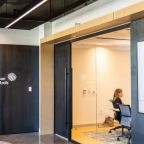A few weeks ago, we posted our 2021 Year In Review blog, addressing the biggest changes we saw regarding the nature of work and the workplace. These facilities management trends will undoubtedly continue in the new year, but with new twists. With time to respond to these workplace predictions, we should see more informed organizations acting with more conviction and getting better results – and continued frustrations for those who don’t tackle them strategically.
The Great Resignation Will Require Space Optimization
Of all the differences between the start of 2021 and 2022, one stands out against the rest: instead of uncertainty around economic conditions and a general thankfulness to still have a job, unemployment is now at record lows and employees feel empowered to pursue new opportunities that may better suit their expectations and demands.
Of course, mainstay issues like salary, time off and workplace culture play a huge role in how each person and company will experience this trend. But in order to retain employees moving forward, organizations will need to focus more than ever on optimizing the structure of the workplace itself.
It’s clear that most people have learned to appreciate the flexibility that comes from working from home at least some of the time. But there are drawbacks and limitations, ranging from loneliness to reduced collaboration and trouble distinguishing between work time and leisure time. Without proper guidance – and support in the form of a welcoming physical office environment as an alternative – those problems will persist.
That’s why 2022 will be the year we answer the questions around the role of the physical workplace and predictions in the future of work. As organizations reinvent their workplaces to combat the forces of the Great Resignation and the limitations of remote work, they’ll search for and find answers to important questions such as:
- Are our offices in the right locations?
- Do we have the right mix of offices, conference and huddle rooms to support the kind of work people come into the office for?
- Can staff easily see where and when the coworkers they want to collaborate with are coming into the office and where are they sitting?
Finding the answers to those questions is where our second trend enters the conversation…
Real-Time, Prescriptive Insights Will Inform Space Decisions
Organizations can’t just make assumptions about how to update their workplaces in hopes of encouraging coworkers to return to the office. Like any big business decision, they need data. In 2022, we’ll see much more widespread reliance on workplace analytics to deliver a deep understanding of how spaces are used and how teams want to interact with them.
The key difference is that the data they rely on will no longer be siloed. Rather, savvy businesses will aggregate data from every system at their disposal – desk-booking apps, occupancy sensors, visitor management systems, badge data, wifi connectivity data and more – to rationalize their real estate portfolio as a whole.
What’s more, once an organization unifies their insights across workspaces, occupants and activities, they can develop forecasts or predictions of upcoming needs so they can quickly pivot as requirements change. The value of this can’t be overstated!
Corporate Responsibility Mandates Environmental Analysis
A great example of the value of collecting data from all corners comes from the environmental arena. The reasons are fairly straightforward:
- Offices, education buildings and healthcare facilities account for one-third of all commercial-use energy consumption. Given rising climate concerns and the high cost of energy, it’s reasonable to expect business leaders to tackle this head on.
- The pandemic made it clear that indoor spaces play a big role in personal health and safety. Businesses need to actively ensure employees feel safe visiting – and that they actually are safe to visit.
The ability to track detailed environmental data and analyze trends over time will go a long way to helping organizations understand how healthy their actual facilities are. Using environmental sensors, they can discover the truth around diverse factors such as noise levels, light, occupancy, space utilization and more. It also includes air quality indicators such as CO2 levels and TVOC’s (total volatile compounds).
Poor numbers for the latter two (CO2 and TVOC) could indicate poor air movement in a given space. Since many studies have found rapid cycling of fresh air and intense filtering of the air beneficial for limiting the amount of COVID virus particles moving through the air, it could easily be seen as mission-critical – and ethically imperative – to deploy these environmental sensors.
The Employee-Facility Relationship Goes Transparent
Environmental intelligence won’t just influence business decisions. Hybrid employees also want to know the scoop on indoor air quality, lighting and noise when deciding whether to come into the office and where to sit once they’re on site.
Even if organizations may not want employees to see data on TVOC and Co2 – which can be a bit scary – they do want employees to have access to information that helps them make informed choices around coming into the office on a given day and where they sit when they do.
Yet again, this will only be possible by creating new connections between previously disparate systems. In this case, we’ll see companies provide environmental sensor data through tools like employee enablement apps so that desk and room booking are easier and more useful. As an added bonus, with more people using those apps, businesses will get even more actionable data about how to optimize those spaces by (anonymously) tracking their behavior.
The Theme of 2022: Predictive Adaptability
In 2021, flexibility was critical – but reactionary. Businesses did their best to keep up with changing external and internal influences to maintain a healthy, productive and happy workforce. Now, with many months of experience under their belts, they know flexibility will remain essential to business and employee success.
The difference moving forward is that flexibility will be built into the plan. They’ll finally have the technology and strategies in place (or available) to create appealing, cost-effective workplaces while maintaining great relationships with employees.
No one wants more surprises in 2022, but businesses who follow these facilities management trends will be ready to handle them if – and when – they arise.












